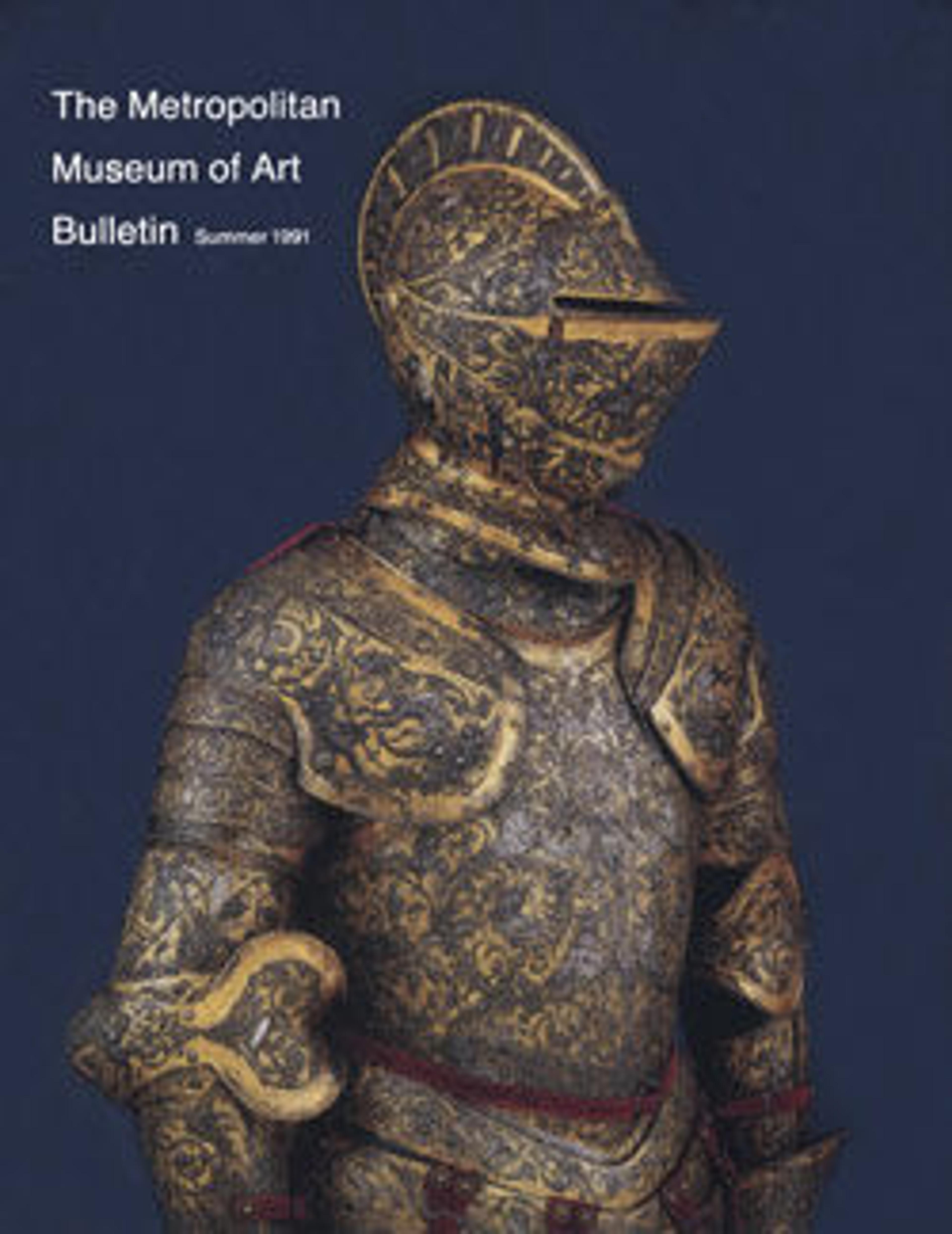Helmet (Suji-kabuto Akoda-nari)
This type of helmet is known as a suji-kabuto. The bowl is constructed of fifty-two ridged plates with a pronounced rise at the back. The overall shape is known as akoda-nari (akoda is a squashlike fruit), a style fashionable during the Muromachi period. It dates from the fifteenth century but was remounted for use in the late seventeenth or early eighteenth century. The bowl is inscribed with the character Kami (or Tatematsuru), used by the Haruta school of armorers in Nara. The badge on the turnbacks of the neck guard is that of the Sanada family, daimyo of Ueda.
Artwork Details
- Title: Helmet (Suji-kabuto Akoda-nari)
- Date: late 15th–16th century
- Culture: Japanese
- Medium: Iron, lacquer, copper, gold, silk
- Dimensions: H. 10 in. (25.4 cm); W. 17 1/4 in. (43.8 cm); D. 15 in. (38.1 cm); Wt. 8 lb. 4.3 oz. (3750.6 g)
- Classification: Helmets
- Credit Line: Rogers Fund, 1913
- Object Number: 13.112.10
- Curatorial Department: Arms and Armor
More Artwork
Research Resources
The Met provides unparalleled resources for research and welcomes an international community of students and scholars. The Met's Open Access API is where creators and researchers can connect to the The Met collection. Open Access data and public domain images are available for unrestricted commercial and noncommercial use without permission or fee.
To request images under copyright and other restrictions, please use this Image Request form.
Feedback
We continue to research and examine historical and cultural context for objects in The Met collection. If you have comments or questions about this object record, please contact us using the form below. The Museum looks forward to receiving your comments.
